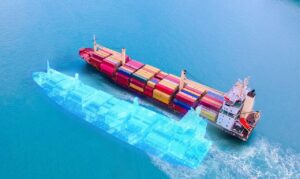At CORE POWER‘s recent European Summit held on 10 July at The IET London, panellists highlighted the importance of building a skilled maritime nuclear workforce through coordinated efforts in training, culture, regulation, and industry collaboration to address the challenges of advanced reactor technology and talent retention.
At the recent session titled Developing the Workforce of the Future hosted by CORE POWER, Dr. Rory Megginson (CORE POWER) delivered a keynote address, joined by panellists Tobi Menzies (CORE POWER), Jerry Paul (Maine Maritime Academy), Nathaniel Read (Cambridge University), Torbjorn Lie (OSM Thorne), Gina Kim (ITF), and Evangelos Bougouris (Strathclyde University).
Together, they examined the critical challenges and opportunities in building a skilled maritime nuclear workforce. From specialist training and public perception to regulatory compliance and talent retention, the discussion highlighted key strategies to ensure the future growth and safety of the nuclear maritime industry.
Panellists described the maritime nuclear workforce as the ultimate long lead item. Unlike many other industries, building a team capable of operating nuclear-powered vessels demands years of specialist training, education, and practical experience. The intricate regulatory landscape, combined with stringent safety and security requirements, means that talent pipelines must be carefully cultivated and coordinated across governments, industry players, and educational institutions.
Attracting and Retaining Talent in a Competitive Market
Panellists reinforced the notion that attracting new talent remains a formidable challenge. While the sector offers the allure of cutting-edge technology and potentially prestigious career paths, financial incentives continue to drive many professionals to more lucrative sectors like oil, gas, and mining. However, this dynamic also risks safety culture if monetary motivations overshadow operational rigour.
According to the panellists, retention issues are compounded by lifestyle factors: younger generations of mariners increasingly seek better work-life balance, favouring schedules that offer consistent time onshore and proximity to family.
The nuclear maritime sector, particularly with coastal deployments, may provide an advantage here, offering shorter shifts and better access to urban centres compared to traditional deep-sea shipping.
READ: IMO calls for fair treatment and rights for seafarers
Building an Aspirational and Inclusive Culture
Experts agreed that cultivating a strong, aspirational culture is essential. Workers want to feel proud of their roles and connected to an organisation that values excellence and continuous improvement. This culture must be embedded vertically, across all levels of the organisation, and promoted as a key element in recruitment and retention strategies.
Collective bargaining agreements also play a significant role by offering flexible and fair work conditions that can be adapted to modern workforce needs, supporting both productivity and employee well-being.
The Training Imperative
Deploying advanced nuclear technologies aboard ships, especially fourth-generation reactors, brings new operational complexities, according to the panellists. Panellists emphasised that operators will require a profound and evolving knowledge of these systems, sometimes supported remotely by experts with deep reactor physics expertise.
Existing regulatory frameworks, such as those developed by the International Atomic Energy Agency (IAEA) and national bodies like the US Nuclear Regulatory Commission (NRC), provide a solid foundation for creating rigorous training and education programmes.
Industry-wide collaboration, possibly through consortia that include vendors, operators, and academic institutions, was recommended to ensure training is comprehensive and aligned with evolving technologies.
Adapting Crew Sizes and Operational Models
Initial deployments of nuclear-powered vessels may require larger crews to manage complex new systems safely. However, as technologies mature and operational experience grows, much like what occurred with terrestrial nuclear power plants, crew sizes can be optimised and reduced without compromising safety.
Flexibility will be key, as workforce needs will vary depending on the specific reactor technologies and operational profiles of the vessels.
READ: IKEA collaborates with the Mission to Seafarers to support seafarer welfare
Looking Ahead: A Collective Responsibility
Addressing the maritime nuclear workforce challenge requires coordinated efforts among governments, regulatory agencies, companies, unions, and educational bodies. These entities must collaborate to establish clear career pathways, invest in training pipelines, and cultivate a culture of safety and excellence.
The maritime nuclear industry is poised to offer exciting career opportunities that combine technology, environmental stewardship, and global impact. Yet, success depends on building a workforce that is well-trained, motivated, and supported by a strong culture and robust institutional frameworks.
With thoughtful investment and collaboration, the sector can navigate these challenges and unlock its full potential.
To read more insights from CORE POWER’s European Summit, don’t miss our latest article covering liability and insurance for nuclear-powered shipping. The discussion, featuring industry leaders and legal experts, explores the complex legal frameworks and international agreements shaping the future of maritime nuclear power.








